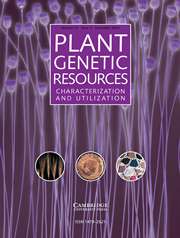Article contents
Phenotypic characterization of Neem (Azadirachta indica A. Juss) germplasm accessions for high oil yield and associated traits
Published online by Cambridge University Press: 03 March 2025
Abstract
In this study, 170 neem (Azadirachta indica) germplasm accessions were characterized for morphological, yield and yield-related traits to assess their genetic variability and potential for genetic improvement. This comprehensive investigation revealed significant differences in mean performance across the accessions, providing a wide dataset that offers valuable insights into the genetic diversity of neem. Significant phenotypic variability was observed across all traits, including plant height (PHT), seed weight (SEW), kernel weight (KEW) and oil content percentage (OIP). The high variability in diameter at breast height (DBH) and oil content across the germplasm accessions panel highlights the potential for selecting superior genotypes for genetic improvement. Strong positive associations between DBH, seed weight, kernel weight and oil content were identified, indicating that these traits can be critical for selecting high-yielding genotypes. Euclidean distance-based clustering analysis grouped the accessions into four distinct clusters, with Cluster I comprising genotypes with high oil and kernel yields. Principal component analysis corroborated the clustering patterns and identified variables with strong associations, which could guide future breeding programmes. The superior accessions identified, such as VKAF-3, VKAF-9, VKAF-11, VKAF-13, VKAF-139, VKAF-85 and VKAF-20, exhibited promising traits for genetic improvement and sustainability in neem production. Further multi-location and multi-season evaluations are recommended to ensure the stability and adaptability of these promising germplasm accessions. This research underscores the importance of leveraging genetic diversity to enhance neem's economic potential and contribute to sustainable development.
Information
- Type
- Short Communication
- Information
- Copyright
- © The Author(s), 2025. Published by Cambridge University Press on behalf of National Institute of Agricultural Botany
References
- 2
- Cited by

